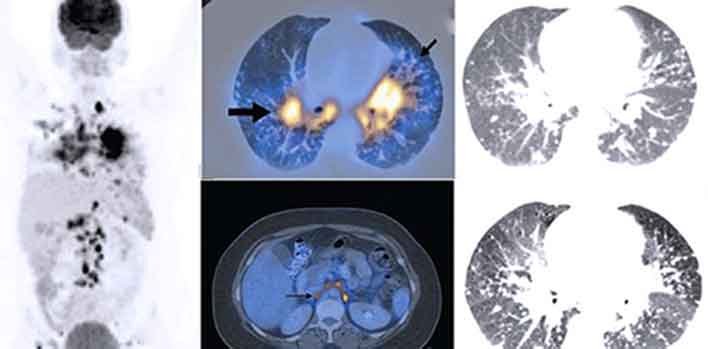Ga 68 PSMA PET CT Imaging
Monday, July 31, 2017 | Cancer
Positron Emission Tomography (PET) is the most advanced method of controlled use of radioactive materials in the health field. F-18 deoxyglucose (FDG) is a glucose marked by a radioactive substance that is quickly consumed by cancer cells. With this method, the location and spread of cancer cells in the body can be easily determined in the most advanced manner. Determining the location and distribution of the disease is the most important information for the treatment plan. For this reason, PET scintigraphy has become a frequent method of screening cancer patients. PET scintigraphy images can be combined with computed tomography images to obtain more precise information about the location of the disease.
However, FDG PET is useless and rarely used in some types of cancer, such as prostate cancer.
Other drugs may be used instead of FDG in PET / CT scintigraphy. One of them is PSMA marked Ga-68. PSMA is a kind of antigenic protein found on prostate cancer. Antibody protein corresponding to this antigen protein was produced. The antibody protein finds and binds to the PSMA antigen protein in the body, just like the key-lock. Thus PSMA PET / CT can be used with high precision in the diagnosis and stage of prostate cancer. With this method, the patient is not given very high radiation. The process takes about 30-45 minutes.
Prostate cancer is the most common type of cancer in men. Various methods can be used to treat the disease. But it must be known how widespread the disease is so that it can be decided. This is called staging. Various methods such as CT, MR, bone scintigraphy can be used to know the state of the disease. But none of them are as successful as their competence. The new Ga 68 PSMA PET CT method can be used to image the entire body and detect the spread of diseased tissue with high sensitivity. This method can still be used in very few places in the world. With Ga 68 PSMA PET CT, prostate cancer can be diagnosed and disseminated with much less time and with less sensitivity.












